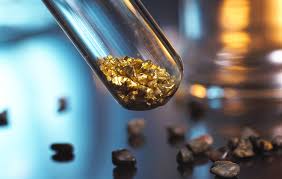
Breaking News
 Warning Signs of an Impending Apocalypse to Watch For (New Update)
Warning Signs of an Impending Apocalypse to Watch For (New Update)
 The Disturbing Celebrity Priest Phenomenon
The Disturbing Celebrity Priest Phenomenon
 From The Moral Majority To A Moral Meltdown
From The Moral Majority To A Moral Meltdown
 When East and West can't meet: Between Leviathan, Behemoth and Mandala
When East and West can't meet: Between Leviathan, Behemoth and Mandala
Top Tech News
 New AI data centers will use the same electricity as 2 million homes
New AI data centers will use the same electricity as 2 million homes
 Is All of This Self-Monitoring Making Us Paranoid?
Is All of This Self-Monitoring Making Us Paranoid?
 Cavorite X7 makes history with first fan-in-wing transition flight
Cavorite X7 makes history with first fan-in-wing transition flight
 Laser-powered fusion experiment more than doubles its power output
Laser-powered fusion experiment more than doubles its power output
 Watch: Jetson's One Aircraft Just Competed in the First eVTOL Race
Watch: Jetson's One Aircraft Just Competed in the First eVTOL Race
 Cab-less truck glider leaps autonomously between road and rail
Cab-less truck glider leaps autonomously between road and rail
 Can Tesla DOJO Chips Pass Nvidia GPUs?
Can Tesla DOJO Chips Pass Nvidia GPUs?
 Iron-fortified lumber could be a greener alternative to steel beams
Iron-fortified lumber could be a greener alternative to steel beams
 One man, 856 venom hits, and the path to a universal snakebite cure
One man, 856 venom hits, and the path to a universal snakebite cure
 Dr. McCullough reveals cancer-fighting drug Big Pharma hopes you never hear about…
Dr. McCullough reveals cancer-fighting drug Big Pharma hopes you never hear about…
Physics Meets Finance: Theoretical Consequences Of Man-Made Gold

Authored by Peter Earle via TheDailyEconomy.org,
In a remarkable feat of modern physics, scientists at the Large Hadron Collider have managed to recreate one of humanity's oldest fantasies: turning lead into gold. By smashing lead atoms together at near-light speeds, the resulting collisions generate immense heat and energy — conditions so extreme that they momentarily produce a flurry of exotic particles and even atoms with the same number of protons as gold. Could it be that the alchemists' long-elusive dream — transmuting the worthless into the sublime — has at last been realized? And not in cluttered stone laboratories thick with incense and delusion, but in the sleek, humming vacuum tubes of a particle collider hidden miles under the Swiss Alps?
But there's a catch: these gold-like nuclei exist for only the tiniest sliver of time — less than a millionth of a second — before they decay or transform into something else. They don't last long enough to form stable atoms, much less shiny gold bars. That's because what's being created in these collisions isn't ordinary, stable gold. Instead, these are unstable isotopes — nuclei that may contain 79 protons (which defines gold) but often the wrong number of neutrons, or too much internal energy to hold themselves together. Lacking the necessary stability, and with no time to capture electrons and form full atoms, these proto-gold particles quickly disintegrate into other elements or radiation. It's an awe-inspiring display of physics at the edge of possibility, but it's a far cry from the practical transformation of lead into gold dreamed of by ancient alchemists.



